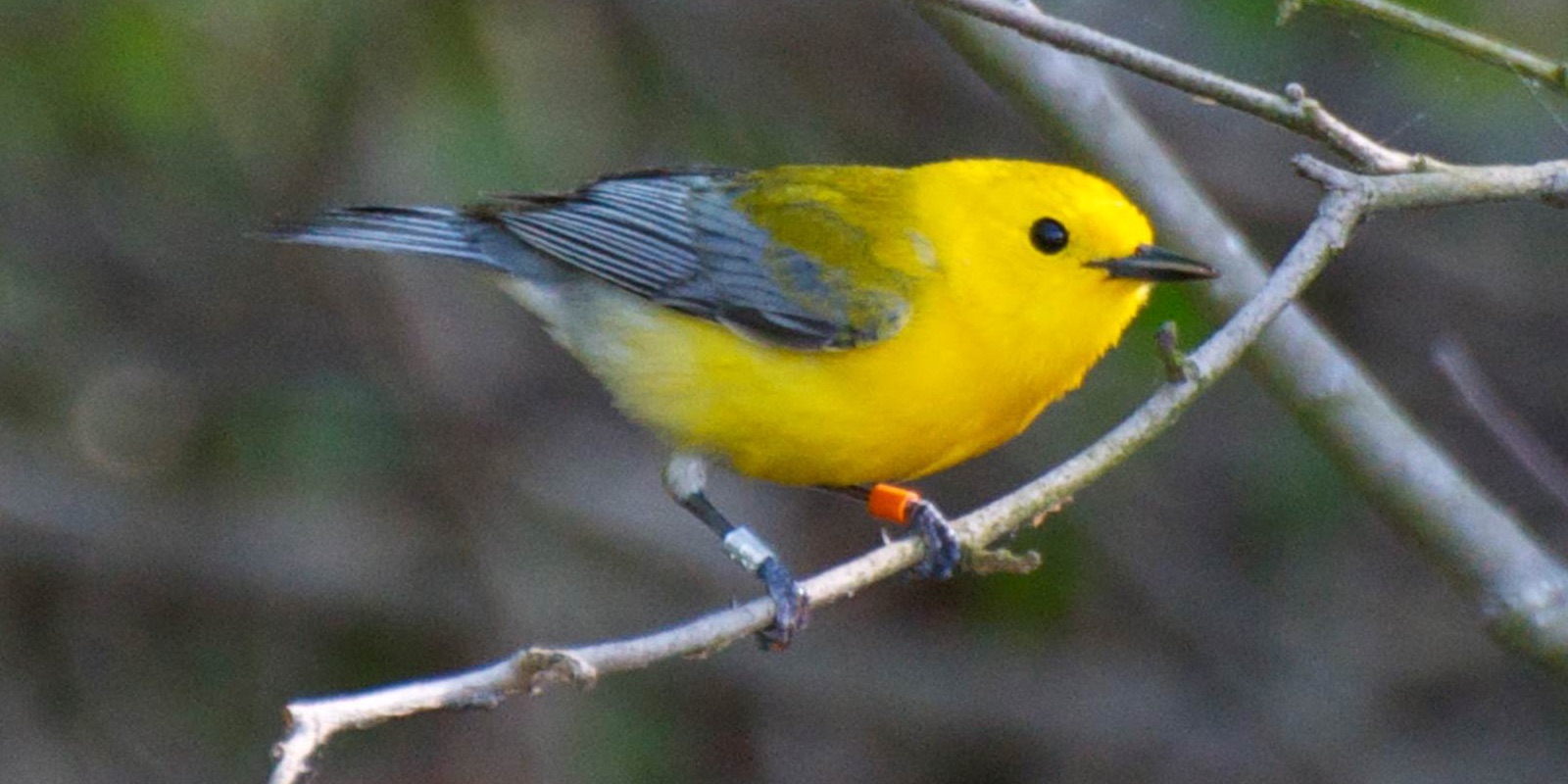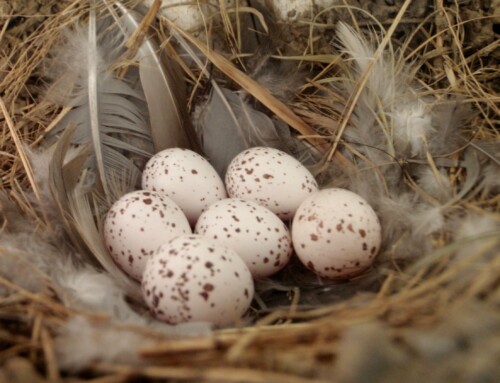Parasites or orphans? What are the costs of raising additional, unrelated chicks?
Anna M. Tucker
Virginia Commonwealth University, US
Current: Auburn University, US
LINKED PAPER
No evidence for a negative effect of conspecific brood parasitism on annual survival of female Prothonotary Warblers. Tucker, Anna M. & Bullock, Lesley P. 2017. IBIS 160: 447-452.
dos: 10.1111/ibi.12538. VIEW
After many years of monitoring Prothonotary Warbler nests three days a week throughout the breeding season, researchers with Virginia Commonwealth University (VCU) started to notice something weird: extra eggs were appearing in some nests. After a graduate student investigating nestling paternity discovered that some clutches contained nestlings that weren’t related to either parent (Heidrich 2012), these “extra” eggs were impossible to ignore. Large-scale analysis of five years of blood samples and genetic markers confirmed that about 25% of nests contained at least one nestling that was not related to the nest mother (Tucker et al. 2016). Some females were laying eggs in other females’ nests, leaving the burden of incubation and feeding to another pair.

Conspecific brood parasitism, or “egg dumping”, is a relatively common behaviour in some groups of birds, mostly ducks and colonial breeders, but rarely described in songbirds. One of the reasons this behavior is thought to be tolerated by the host females in species like Wood Ducks is that these species typically have young that require little to no parental care post-hatching (Lyon and Eadie 2008). If the female doesn’t have to do more work, what’s the harm of a few extra chicks trailing behind her? The apparent lack of cost to host females means the term “brood parasitism” might be a misnomer in some cases. But Prothonotary Warblers do not fit that mould. Like most songbirds, both parents provide intensive parental care for their young; after hatching, nestlings are brooded and fed in the nest for 10-12 days, and then tended and fed as fledglings for a few weeks after leaving the nest. From an evolutionary stand-point, the time and energy spent is worthwhile only if the nestling is genetically related to the parents. An extra egg in the nest could mean a lot of extra work for the host pair, with no fitness reward.

This strange occurrence of orphan nestlings led me to investigate two questions:
- Why was this happening?
- Did the presence of extra nestlings have negative consequences for the host pair?
Prothonotary Warblers are cavity-nesters (unusual for warblers), and we have been able to monitor their breeding ecology so closely because they readily nest in nest boxes. We had a suspicion that the nest boxes might facilitate egg dumping, as boxes are both more conspicuous than tree cavities and placed in slightly higher density than has been observed in natural systems. In this most recent paper, we wanted to know if egg dumping negatively affected the host females by reducing the number of biological offspring they produced (if extra nestlings meant less feeding and care for biological offspring) or by reducing their annual survival (if the energy of caring for extra nestlings reduced their ability to survive migration and overwintering). Either of these could influence population demographics if the frequency of egg dumping was high enough. Interestingly, despite the intensive parental care they provide to young, we found no evidence that host females had lower average reproductive success or annual survival probabilities than non-host females. Maybe these Prothonotary Warbler nestlings shouldn’t be considered parasitic either, but instead orphaned and taken in by another pair.

This is one of many ecological insights that have come out of this long-term monitoring project, which continues under Drs. Lesley Bulluck and Cathy Viverette at the Bulluck Lab at VCU. The Prothonotary Warbler nest box monitoring program was first established in 1987 by Charlie and Leann Blem and has contributed to a variety of projects on demographics, disease ecology, diet, toxin exposure, feather coloration, migratory connectivity, and the effects of phenological shifts on the timing of breeding, to name a few. In addition to monitoring Prothonotary Warblers during the breeding season, Bulluck and Viverette lead the Team Warbler project which brings undergraduates to Panama each year to study Neotropical migrants overwintering in coastal mangroves. Team Warbler also connects middle schools in Virginia with schools in Panama to promote wetland conservation for migratory birds across the hemisphere.
References
Lyon, B. E., & J. M. Eadie. 2008. Conspecific brood parasitism in birds: a life-history perspective. Annual Review or Ecology, Evolution, and Systematics 39: 343–363.
Heidrich, C. 2012. Who’s your daddy? Extra-pair copulation of Prothonotary warblers (Protonotaria citrea). Unpublished Master’s thesis, Virginia Commonwealth Univeristy, Richmond, Virginia USA.
Tucker, A. M., R. J. Dyer, S. K. Huber, & L. P. Bulluck. 2016. Opportunistic conspecific brood parasitism in a box-nesting population of Prothonotary Warblers (Protonotaria citrea). Auk 133: 298–307.
Image credit
Featured image: Prothonotary Warbler nestlings © Lesley Bulluck
Blog posts express the views of the individual author(s) and not those of the BOU.
If you want to write about your research in #theBOUblog, then please see here.





